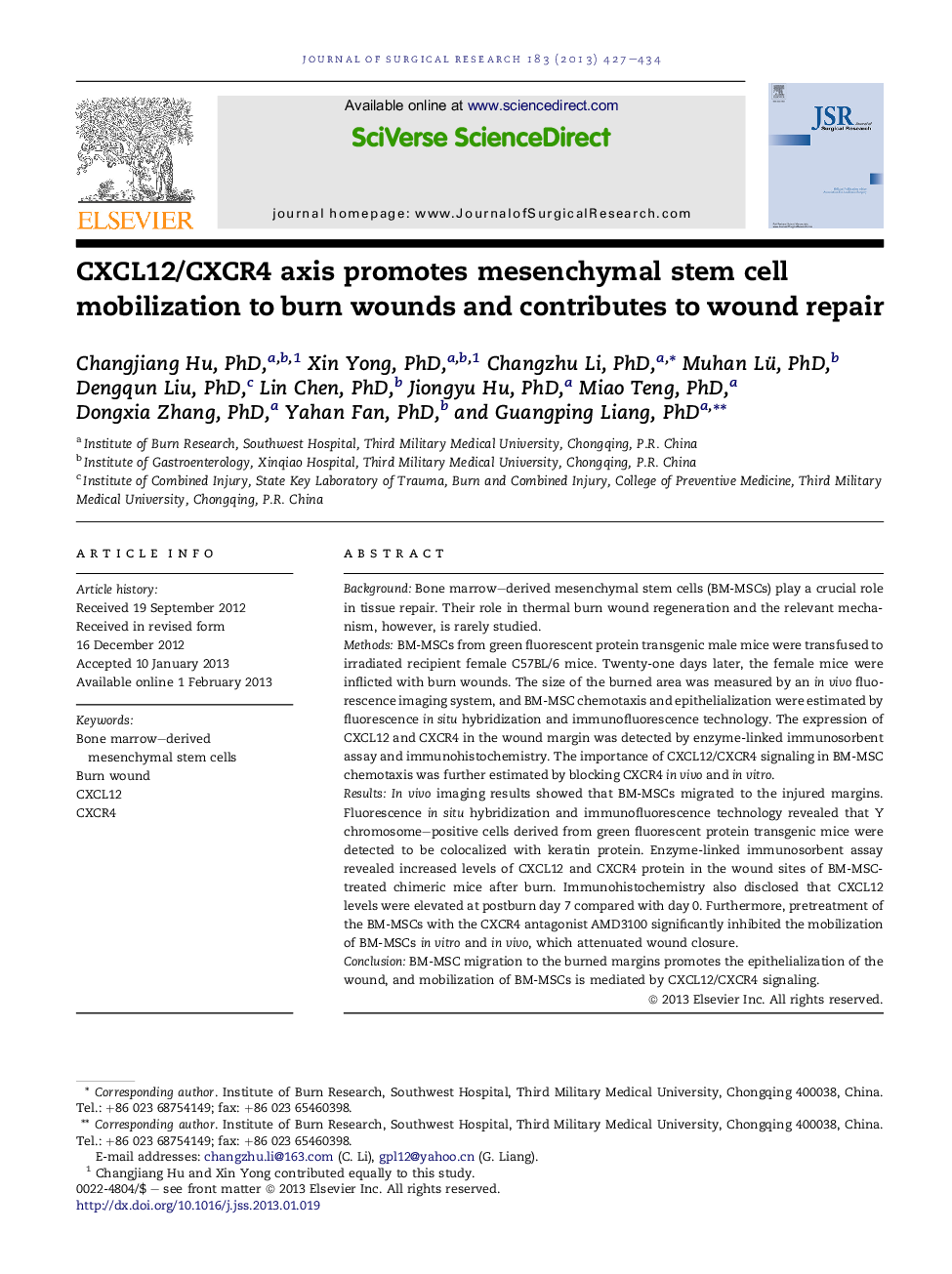| کد مقاله | کد نشریه | سال انتشار | مقاله انگلیسی | نسخه تمام متن |
|---|---|---|---|---|
| 6254414 | 1288428 | 2013 | 8 صفحه PDF | دانلود رایگان |

BackgroundBone marrow-derived mesenchymal stem cells (BM-MSCs) play a crucial role in tissue repair. Their role in thermal burn wound regeneration and the relevant mechanism, however, is rarely studied.MethodsBM-MSCs from green fluorescent protein transgenic male mice were transfused to irradiated recipient female C57BL/6 mice. Twenty-one days later, the female mice were inflicted with burn wounds. The size of the burned area was measured by an in vivo fluorescence imaging system, and BM-MSC chemotaxis and epithelialization were estimated by fluorescence in situ hybridization and immunofluorescence technology. The expression of CXCL12 and CXCR4 in the wound margin was detected by enzyme-linked immunosorbent assay and immunohistochemistry. The importance of CXCL12/CXCR4 signaling in BM-MSC chemotaxis was further estimated by blocking CXCR4 in vivo and in vitro.ResultsIn vivo imaging results showed that BM-MSCs migrated to the injured margins. Fluorescence in situ hybridization and immunofluorescence technology revealed that Y chromosome-positive cells derived from green fluorescent protein transgenic mice were detected to be colocalized with keratin protein. Enzyme-linked immunosorbent assay revealed increased levels of CXCL12 and CXCR4 protein in the wound sites of BM-MSC-treated chimeric mice after burn. Immunohistochemistry also disclosed that CXCL12 levels were elevated at postburn day 7 compared with day 0. Furthermore, pretreatment of the BM-MSCs with the CXCR4 antagonist AMD3100 significantly inhibited the mobilization of BM-MSCs in vitro and in vivo, which attenuated wound closure.ConclusionBM-MSC migration to the burned margins promotes the epithelialization of the wound, and mobilization of BM-MSCs is mediated by CXCL12/CXCR4 signaling.
Journal: Journal of Surgical Research - Volume 183, Issue 1, July 2013, Pages 427-434